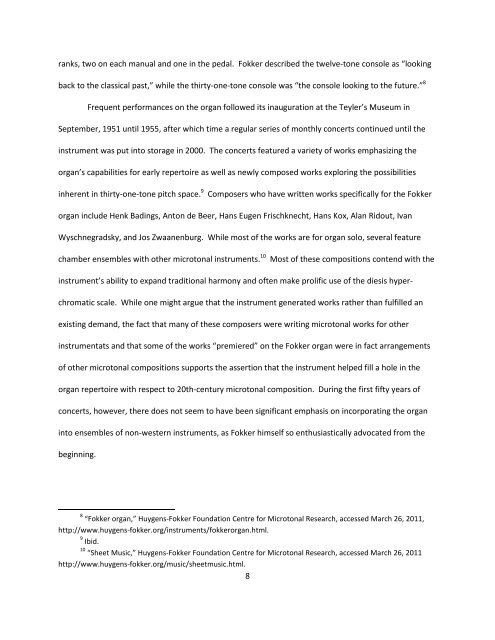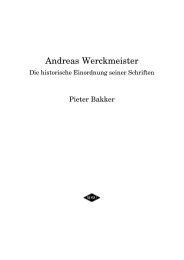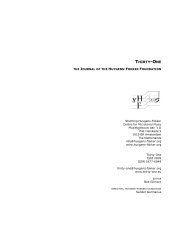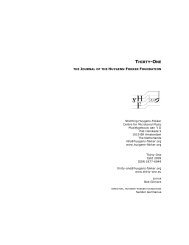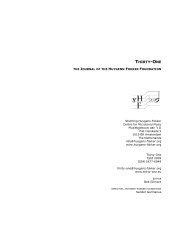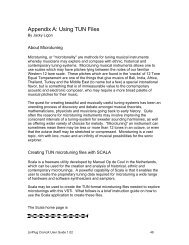Recent Organ Design Innovations and the 21st-century - Stichting ...
Recent Organ Design Innovations and the 21st-century - Stichting ...
Recent Organ Design Innovations and the 21st-century - Stichting ...
Create successful ePaper yourself
Turn your PDF publications into a flip-book with our unique Google optimized e-Paper software.
anks, two on each manual <strong>and</strong> one in <strong>the</strong> pedal. Fokker described <strong>the</strong> twelve-tone console as “looking<br />
back to <strong>the</strong> classical past,” while <strong>the</strong> thirty-one-tone console was “<strong>the</strong> console looking to <strong>the</strong> future.” 8<br />
Frequent performances on <strong>the</strong> organ followed its inauguration at <strong>the</strong> Teyler’s Museum in<br />
September, 1951 until 1955, after which time a regular series of monthly concerts continued until <strong>the</strong><br />
instrument was put into storage in 2000. The concerts featured a variety of works emphasizing <strong>the</strong><br />
organ’s capabilities for early repertoire as well as newly composed works exploring <strong>the</strong> possibilities<br />
inherent in thirty-one-tone pitch space. 9 Composers who have written works specifically for <strong>the</strong> Fokker<br />
organ include Henk Badings, Anton de Beer, Hans Eugen Frischknecht, Hans Kox, Alan Ridout, Ivan<br />
Wyschnegradsky, <strong>and</strong> Jos Zwaanenburg. While most of <strong>the</strong> works are for organ solo, several feature<br />
chamber ensembles with o<strong>the</strong>r microtonal instruments. 10 Most of <strong>the</strong>se compositions contend with <strong>the</strong><br />
instrument’s ability to exp<strong>and</strong> traditional harmony <strong>and</strong> often make prolific use of <strong>the</strong> diesis hyper-<br />
chromatic scale. While one might argue that <strong>the</strong> instrument generated works ra<strong>the</strong>r than fulfilled an<br />
existing dem<strong>and</strong>, <strong>the</strong> fact that many of <strong>the</strong>se composers were writing microtonal works for o<strong>the</strong>r<br />
instrumentats <strong>and</strong> that some of <strong>the</strong> works “premiered” on <strong>the</strong> Fokker organ were in fact arrangements<br />
of o<strong>the</strong>r microtonal compositions supports <strong>the</strong> assertion that <strong>the</strong> instrument helped fill a hole in <strong>the</strong><br />
organ repertoire with respect to 20th-<strong>century</strong> microtonal composition. During <strong>the</strong> first fifty years of<br />
concerts, however, <strong>the</strong>re does not seem to have been significant emphasis on incorporating <strong>the</strong> organ<br />
into ensembles of non-western instruments, as Fokker himself so enthusiastically advocated from <strong>the</strong><br />
beginning.<br />
8<br />
“Fokker organ,” Huygens-Fokker Foundation Centre for Microtonal Research, accessed March 26, 2011,<br />
http://www.huygens-fokker.org/instruments/fokkerorgan.html.<br />
9<br />
Ibid.<br />
10<br />
“Sheet Music,” Huygens-Fokker Foundation Centre for Microtonal Research, accessed March 26, 2011<br />
http://www.huygens-fokker.org/music/sheetmusic.html.<br />
8


